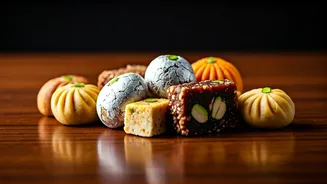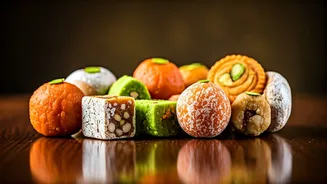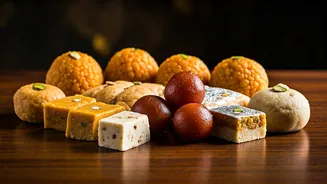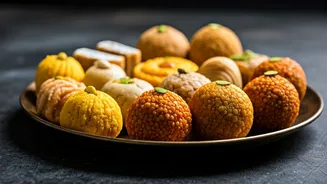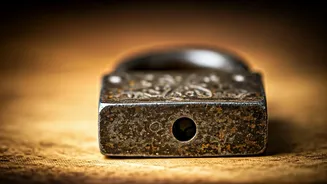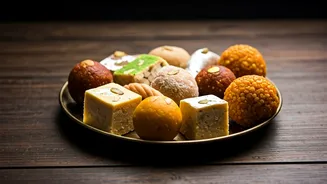Beyond the Classic
The conventional Diwali spread often features the beloved gulab jamun, a deep-fried dough ball soaked in sugar syrup. However, the Indian culinary scene
is incredibly vast and varied, offering a plethora of other sweet options that deserve recognition. This article encourages individuals to venture beyond the typical and experience the diverse flavors of Indian desserts. It emphasizes the importance of exploring regional specialties and appreciating the artistry behind these less common treats, celebrating the country's rich food heritage beyond the usual suspects. This can enrich the Diwali celebrations and bring new experiences.
Regional Treasures
India's different regions have their own unique sweet specialties. Bengal, known for its delectable sandesh and rasgulla, has a rich confectionary tradition. The Western states, such as Maharashtra and Gujarat, offer a range of sweets that showcase the influence of local ingredients and cultural preferences. In South India, payasam, a creamy dessert made with milk and rice, takes center stage, with each state having its own distinct variation. Exploring these regional treasures allows one to appreciate the diversity of flavors and the unique ingredients used across the country. Understanding each region's food culture enhances the Diwali experience and creates a sense of exploration and discovery within the Indian culinary landscape.
Rare Sweet Finds
Moving beyond the typical, there are numerous rare sweets that are a must-try. Some of these are rarely found outside their region of origin. The article suggests exploring lesser-known delights such as malpua, a deep-fried pancake soaked in syrup, often flavored with cardamom and saffron. There are also interesting variations like the ghevar, a disc-shaped dessert from Rajasthan, or the adhirasam from Tamil Nadu. Another interesting option is the Mysore pak, a sweet from Karnataka known for its melt-in-your-mouth texture. Trying these lesser-known sweets expands one’s culinary horizon and promotes a deeper appreciation of the heritage of Indian sweets. Finding these specialities can be a fun adventure for the taste buds.
The Diwali Twist
Incorporating lesser-known sweets into the Diwali celebrations is a great way to make them stand out. One can create a dessert table featuring a variety of options, from well-known treats to the rare ones mentioned above. This offers guests a wider tasting experience and encourages them to try new flavors. This also provides an opportunity to share the story behind each sweet. Such diversity of options can make Diwali a lot more memorable and unique. Diwali, at its heart, is about coming together and sharing joy, and introducing new flavors and traditions adds a lot of value to the occasion. This also enhances cultural knowledge and appreciation.
Sweet Ingredient Secrets
The quality of the ingredients is paramount in making great sweets. Many Indian sweets feature local ingredients such as jaggery, which is unrefined sugar, or besan, which is made from chickpeas. Using fresh, high-quality ingredients can significantly elevate the taste and texture of any dessert. When making sweets at home, understanding the source of the ingredients can add a personal touch to the final product. Exploring authentic ingredients ensures that the essence of traditional Indian sweets is preserved. This can inspire a deeper connection to the cultural heritage. It also ensures the authenticity of the Diwali celebrations.
Where to Find Them
Finding rare Indian sweets can be an adventure in itself. One can visit local sweet shops, especially in areas with diverse cultural communities. The shops are more likely to offer regional specialties that are not commonly available. Online platforms and specialized marketplaces are also growing in popularity, making it easier to discover these treats from different regions. Farmers markets and food festivals provide another excellent venue to find unique sweets. Exploring these options adds an element of excitement to the search for these delightful treats. It also allows one to support small businesses and local communities, deepening the experience of exploration and appreciation.
